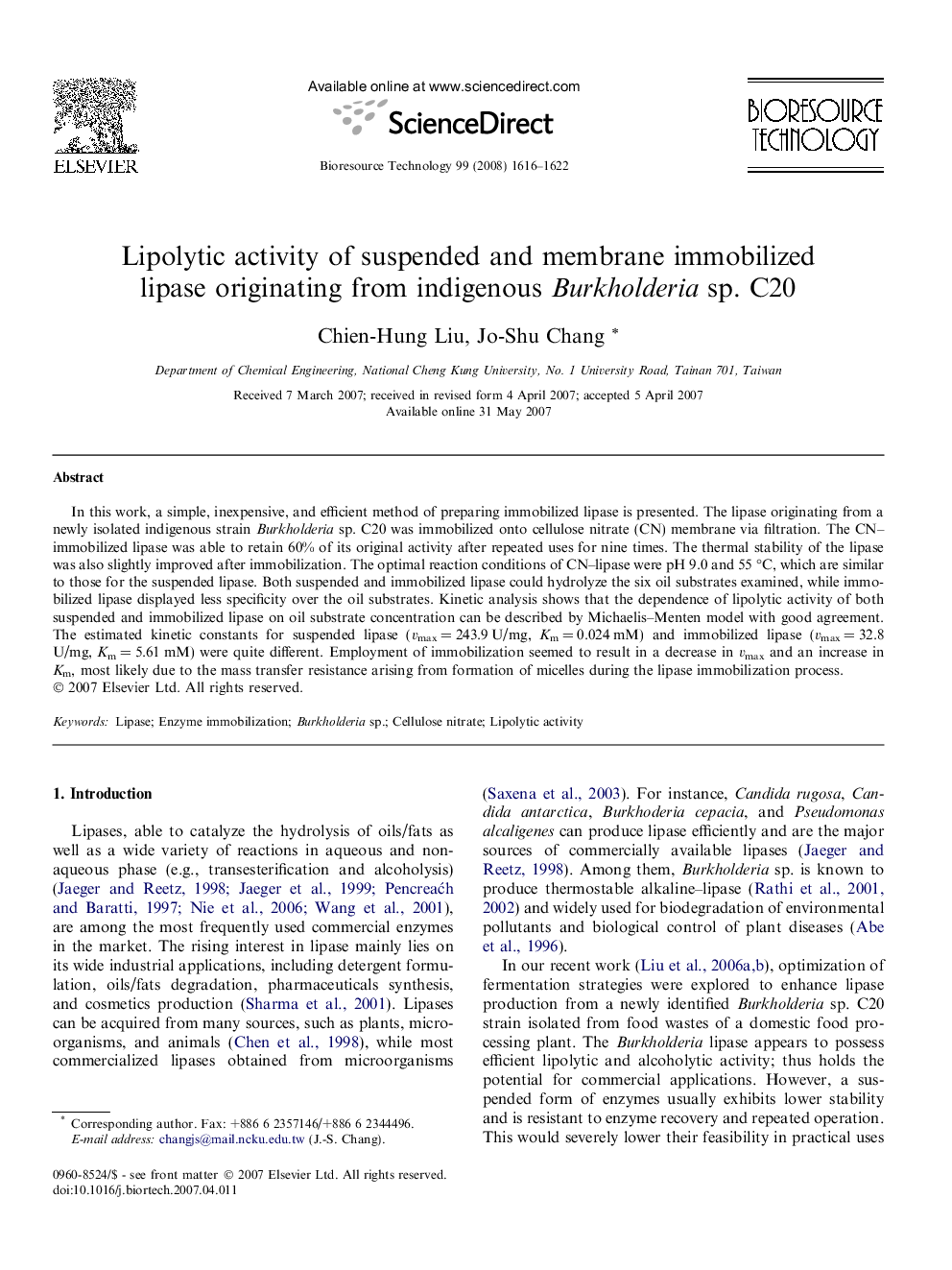| Article ID | Journal | Published Year | Pages | File Type |
|---|---|---|---|---|
| 684665 | Bioresource Technology | 2008 | 7 Pages |
In this work, a simple, inexpensive, and efficient method of preparing immobilized lipase is presented. The lipase originating from a newly isolated indigenous strain Burkholderia sp. C20 was immobilized onto cellulose nitrate (CN) membrane via filtration. The CN–immobilized lipase was able to retain 60% of its original activity after repeated uses for nine times. The thermal stability of the lipase was also slightly improved after immobilization. The optimal reaction conditions of CN–lipase were pH 9.0 and 55 °C, which are similar to those for the suspended lipase. Both suspended and immobilized lipase could hydrolyze the six oil substrates examined, while immobilized lipase displayed less specificity over the oil substrates. Kinetic analysis shows that the dependence of lipolytic activity of both suspended and immobilized lipase on oil substrate concentration can be described by Michaelis–Menten model with good agreement. The estimated kinetic constants for suspended lipase (vmax = 243.9 U/mg, Km = 0.024 mM) and immobilized lipase (vmax = 32.8 U/mg, Km = 5.61 mM) were quite different. Employment of immobilization seemed to result in a decrease in vmax and an increase in Km, most likely due to the mass transfer resistance arising from formation of micelles during the lipase immobilization process.
